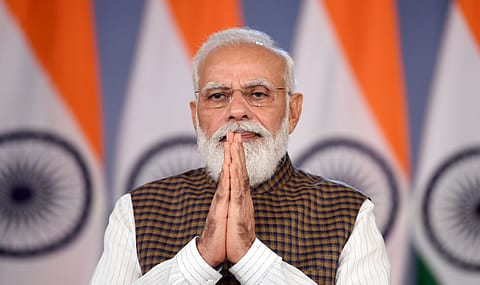Modi 3.0's tech trifecta: Cheap data, UPI dominance and 5G is powering India's march, says BJP's report card
Today, India is home to 116 crore mobile subscribers, and its internet user base has grown by 285% in just over a decade.

In India’s push towards building a $1 trillion digital economy, the country is leveraging technology like never before, transforming how governance, commerce, and citizen services are delivered.
Over the past 11 years, strong BJP government-led digital infrastructure has led to sweeping changes in the country’s socio-economic fabric, including low data costs (as cost per GB of data has declined from ₹308 to ₹9.34 in the last decade) and increased mobile penetration, as per the party's '11 Years of Seva' report released today.
Today, India is home to 116 crore mobile subscribers, and its internet user base has grown by 285% in just over a decade. One of the strongest endorsements of this digital leap is the scale of adoption of digital payments. In April 2025 alone, transactions worth ₹24 lakh crore were carried out on the Unified Payments Interface (UPI). Nearly half of the world’s real-time digital transactions now happen in India, making it a global fintech powerhouse, the report claimed.
Much of this growth stems from the PM Modi government’s strategic initiatives under the Digital India mission. Through the BharatNet project, over 2.14 lakh Gram Panchayats have been connected with high-speed optical fibre. Nearly 7 lakh km of fibre has been laid, pushing connectivity into the country’s remotest corners. The rollout of 5G in 99.6% of districts is now expected to usher in the next wave of digital transformation, the report said.
At the core of India’s digital governance model is the commitment to transparency and inclusion. With platforms like Aadhaar-enabled Direct Benefit Transfers (DBT) and the Government e-Marketplace (GeM), the country has digitised public services at scale. DBT transfers worth ₹44 lakh crore have reached beneficiaries, eliminating leakages and saving over ₹3.84 lakh crore by removing ghost beneficiaries.
Even procurement, once a hotbed of bureaucratic inefficiency, is now tech-enabled. Orders worth ₹13.41 lakh crore till March 2025 have been placed on the GeM portal, streamlining purchases for government departments and PSUs.
The digital economy is not just urban-centric. Startups from Tier 2 and Tier 3 cities now form 51% of the ecosystem, signalling a deeper shift, said the report.
Recommended Stories
As India eyes the $1 trillion milestone, its blueprint is clear: scale technology, democratise access, and build a digital-first, inclusive economy for the next generation.